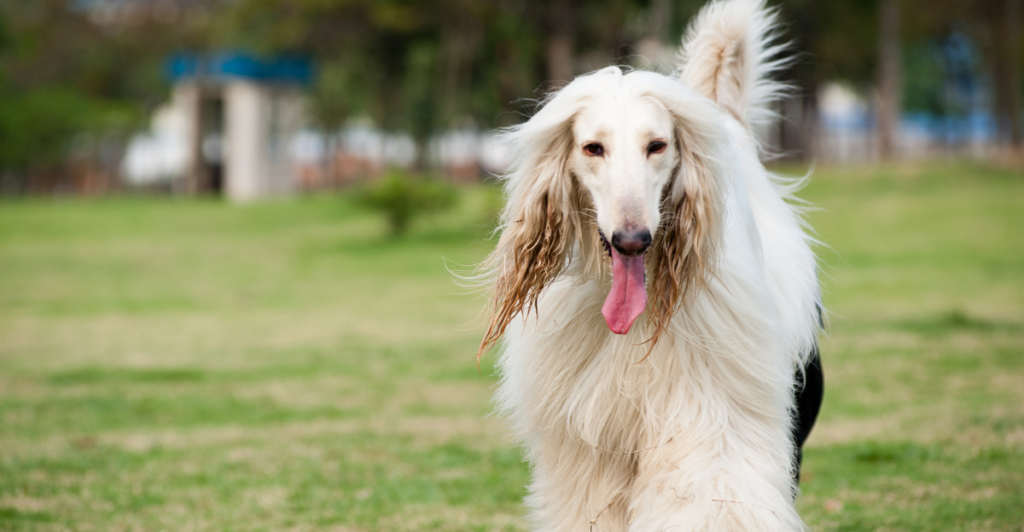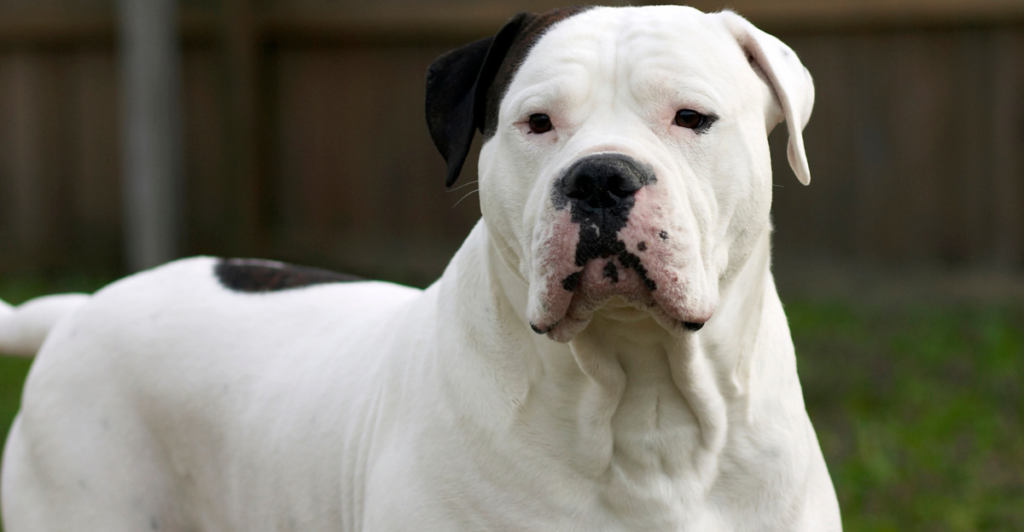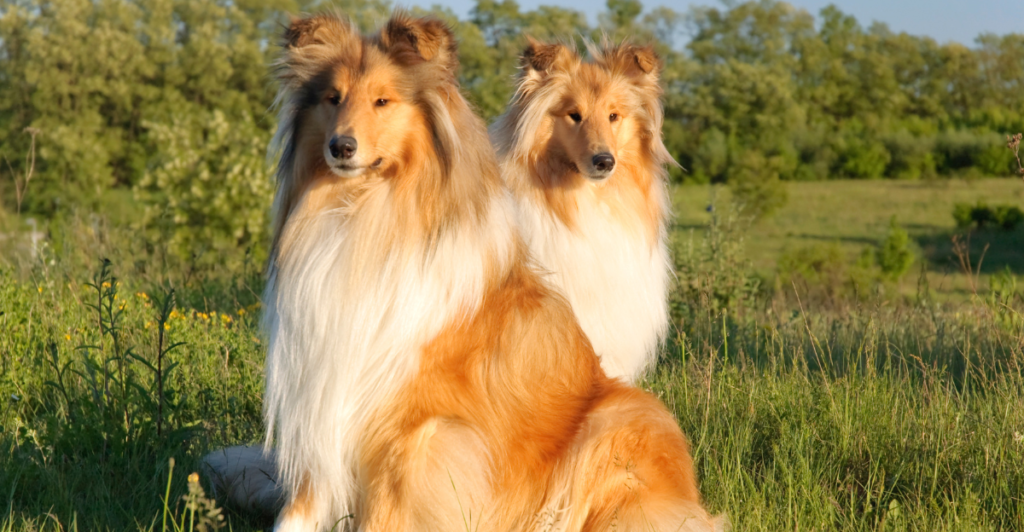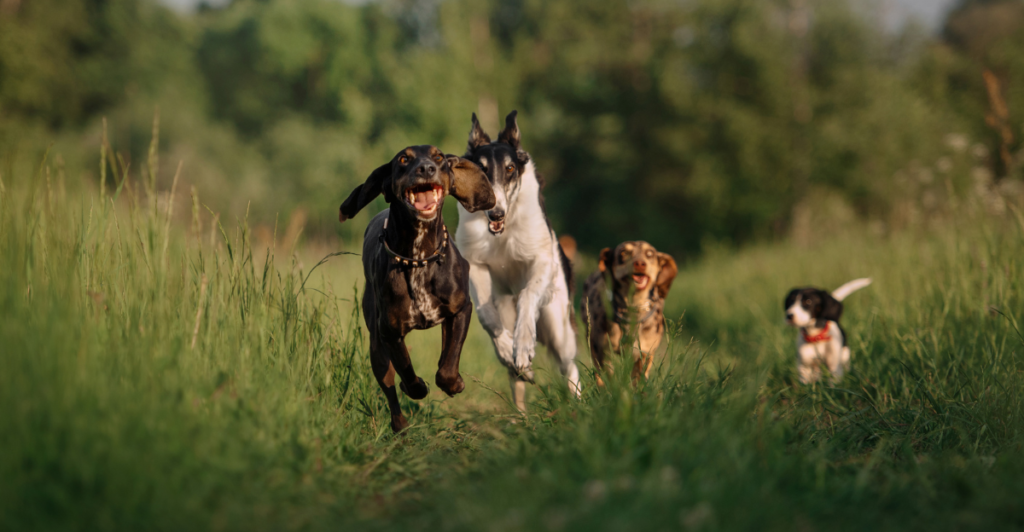
Some dogs love the freedom of an open field—but for certain breeds, going off-leash can mean trouble. Whether it’s a strong prey drive, stubborn streak, or tendency to bolt, not every dog is built for off-leash adventures. Before unclipping the leash, here are eight dog breeds that should never be trusted to roam freely.
Not Always the Big or Bad Ones

Dogs are beloved companions, but not all breeds are suited to roam freely off-leash. While most discussions focus on aggressive or powerful breeds, this list explores surprising cases where leash restrictions are critical.
For instance, even small or highly intelligent dogs—often considered ideal companions—can exhibit behaviors like sudden bolting, territorial guarding, or extreme independence that make them unreliable in open spaces. Whether it’s a strong prey drive, a deeply ingrained herding instinct, or fear-based aggression, each breed here carries unique challenges that could lead to danger for both the dog and others.
Owners must look beyond appearances and stereotypes when evaluating off-leash readiness. These cases underscore why responsible dog ownership means not just love and care—but informed, situational decisions rooted in each breed’s instincts and needs.
Siberian Husky

Siberian Huskies may be friendly and sociable, but their deep-rooted independence and prey drive make them a nightmare to manage off-leash. Originally bred to run for miles across frozen landscapes, Huskies still carry an almost compulsive urge to roam, chase, and explore without regard for commands.
Numerous breed behavior studies rank them among the least likely to obey recall, regardless of training. These dogs are notorious escape artists who can leap fences, dig under enclosures, and vanish the moment they’re let loose. Once they take off, it’s not just a matter of disobedience—it’s a full-on sprint into danger.
In fact, Huskies have been disproportionately represented in fatal incidents involving other animals due to their strong chase instinct. Owners should view leashes and secure environments not as optional, but as essential tools for this high-energy, high-risk breed.
Chow Chow

With their lion-like mane and regal bearing, Chow Chows appear calm and composed—but appearances deceive. This ancient breed is known for being aloof, territorial, and startlingly independent. Unlike more trainable breeds, Chow Chows don’t look to humans for guidance, and their stubborn nature makes them difficult to recall once their focus shifts.
They also rank exceptionally high in owner-directed aggression studies, often reacting poorly to unfamiliar people or perceived encroachments on their space. When off-leash, these instincts can translate into dangerous confrontations with other dogs or strangers, particularly in public parks or trails.
Historically, they were used as temple guards in China, and their wariness of outsiders is baked into their DNA. For this reason, experts often recommend never walking a Chow Chow off-leash in uncontrolled environments, no matter how well-trained.
Border Collie

Border Collies are widely considered the most intelligent dog breed—but intelligence isn’t the same as compliance. These dogs were bred for intense, independent work controlling livestock across open terrain, and that herding drive doesn’t vanish in suburbia.
Off-leash, Border Collies can become hyper-focused on movement, reacting to joggers, bikers, cars, or even children with nipping and circling behaviors. While not aggressive by nature, their compulsive need to control can cause distress, injury, or accidents—especially when untrained or overstimulated.
In fact, their mental stimulation needs are so high that boredom can quickly spiral into mischief or disobedience. They may ignore recall entirely if something “needs herding.” Despite their obedience in structured settings like agility courses, open spaces filled with distractions can override their focus.
Chihuahua

At barely 2 kg (4.4 lbs), Chihuahuas seem like unlikely candidates for leash concerns—but these pint-sized pups pack a surprisingly aggressive punch. Studies consistently rank them high in bite frequency, especially in homes with children or multiple pets.
The issue lies not in brute force but in overconfidence. Many Chihuahuas see themselves as much larger than they are and react to perceived threats—whether it’s a Labrador, a stranger, or even a squirrel—with startling ferocity.
Off-leash, this exaggerated bravado can put them directly in harm’s way, especially since their small size makes them vulnerable to injury from traffic or other animals. Add to this a strong attachment to their owners and a tendency toward fear-based aggression, and the risks multiply.
Wolf-Dog Hybrids

Wolf-dog hybrids may appear majestic and exotic, but they are perhaps the most unpredictable dogs when it comes to off-leash behavior. Unlike typical domesticated breeds, wolf-dogs retain a significant amount of wild instinct, particularly around prey drive and territory defense.
Their behavior can vary drastically even within the same litter, depending on genetic makeup, and standard obedience training often proves ineffective. When off-leash, they are prone to roaming, hunting, and asserting dominance in ways that can endanger other animals and people.
These hybrids frequently struggle with impulse control and have a much weaker human-bonded instinct compared to dogs. Most experts agree that they require secure enclosures, extensive behavioral management, and constant supervision—not open access to parks, trails, or neighborhoods.
Afghan Hound

Afghan Hounds are among the most beautiful and elegant of dog breeds, but underneath their flowing coats lies a highly independent and stubborn spirit. Originally bred in the mountains of Afghanistan to chase down prey at high speeds, these dogs are built for sprinting—and once they start, they don’t stop.
Clocking speeds of up to 64 km/h (40 mph), Afghan Hounds are nearly impossible to catch on foot. Worse still, they are notoriously aloof and unmotivated by praise or commands, making off-leash recall nearly impossible for the average owner. Their instinct to chase small animals like rabbits or birds can trigger sudden and dangerous bolt reactions.
Even highly experienced trainers often struggle with this breed’s reliability in open settings. With such high prey drive and low owner focus, Afghan Hounds are far better suited to large, fenced areas than unfenced off-leash zones.
American Bulldog

American Bulldogs are powerful, protective, and deeply loyal—but their strength and temperament make them risky candidates for off-leash activities. While often unfairly compared to Pit Bulls, American Bulldogs have a distinct behavioral profile.
Their high drive, territorial instincts, and deeply ingrained need to protect can become problematic in unstructured environments. Though they aren’t statistically the most aggressive breed, they do require consistent socialization and confident handling.
When off-leash, especially in unfamiliar territory, they may view other dogs or strangers as threats, potentially leading to confrontations. This behavior is less about intent and more about instinct. A poorly socialized or anxious Bulldog can react quickly and forcefully. Even in play, their physical strength can overwhelm smaller dogs.
Collie

Known best for the fictional hero Lassie, Collies enjoy a reputation as the ultimate family dogs—but that image hides some surprising behavioral challenges. As herding dogs, Collies are hardwired to control movement, often using nipping, barking, or chasing as tools.
While generally gentle, their instinct to protect and organize can escalate off-leash, especially around fast-moving stimuli like cyclists or joggers. They also tend to be highly sensitive to their environments and may react poorly to perceived threats or unfamiliar dogs.
This vigilance can turn into defensiveness when unsupervised. Although their intelligence makes them highly trainable, Collies often struggle with overstimulation in busy or open environments. Off-leash walks may overwhelm them, increasing the risk of unpredictable responses.
Not All Dogs Are Off-Leash Material

Off-leash freedom is a dream for many dog owners—but it’s not a one-size-fits-all privilege. This list proves that even intelligent, loyal, or non-aggressive dogs can be poor candidates for off-leash activities due to unique breed traits.
Whether it’s the wanderlust of a Husky, the aloofness of an Afghan Hound, or the surprising bite risk of a Chihuahua, every breed comes with quirks that impact safety. Leashes aren’t just tools—they’re safeguards against misinterpretation, injury, and loss.
As breed-specific traits become better understood, responsible owners must weigh their dog’s personality, instincts, and training level before unhooking that leash. A moment of freedom is never worth a lifetime of regret.
Explore more of our trending stories and hit Follow to keep them coming to your feed!

Don’t miss out on more stories like this! Hit the Follow button at the top of this article to stay updated with the latest news. Share your thoughts in the comments—we’d love to hear from you!







